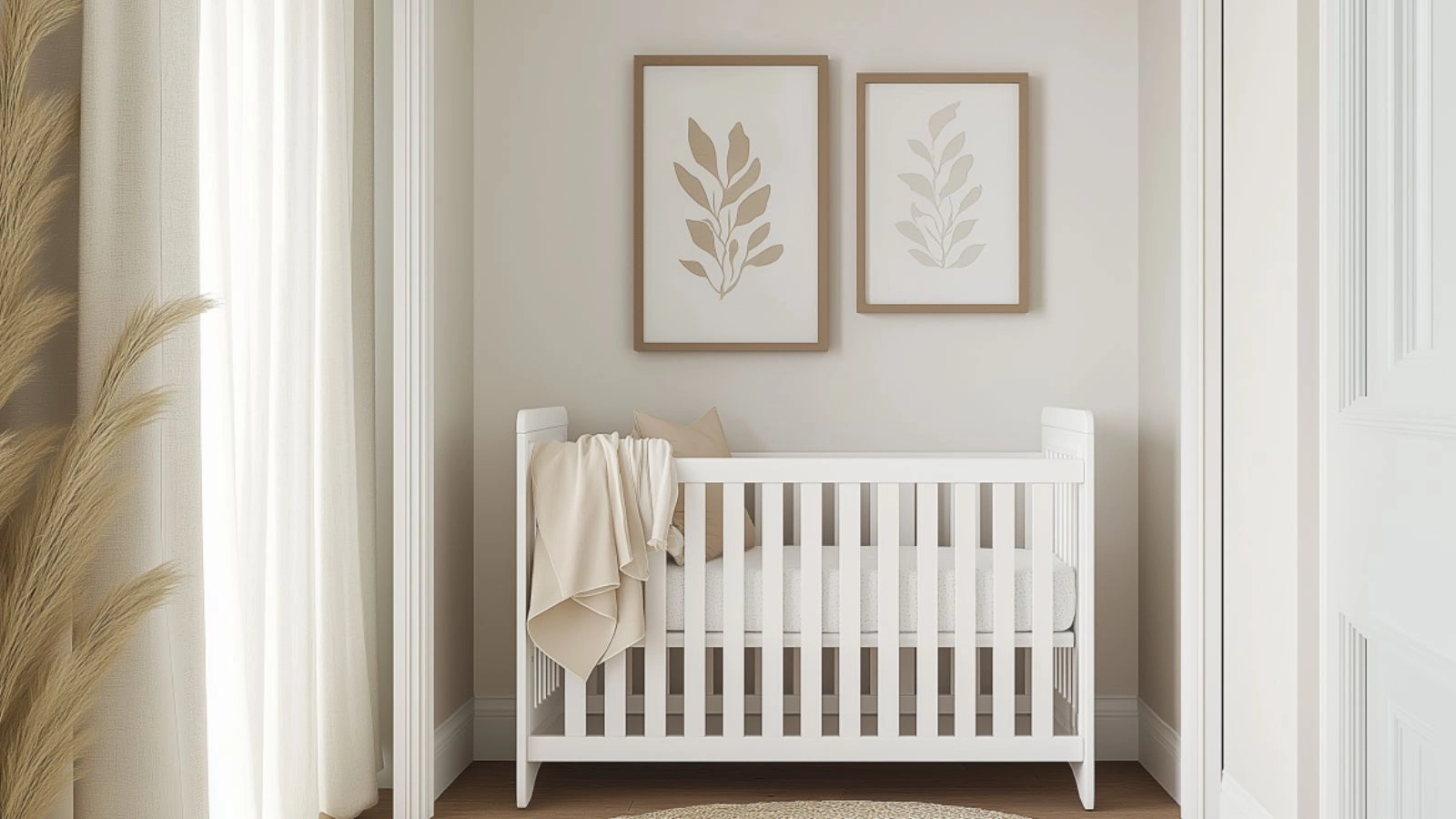Closet Turned Nursery: Small Nursery Ideas That Work in Compact Spaces
Table of Contents
Not everyone has the luxury of a spare bedroom when a new baby arrives. But with a little creativity and design savvy, even the smallest spaces—like an unused closet—can be transformed into a cozy, functional nursery. Turning a closet into a nursery has become a rising trend among urban families, apartment dwellers, and parents who simply want to maximize every square foot of their home.
According to a recent survey on nursery design, over 30% of new parents are now repurposing small spaces rather than dedicating an entire room to the nursery. Whether it’s a walk-in closet or a reach-in with sliding doors, these compact conversions are not only practical but often more intimate and calming for newborns. They also encourage smarter organization and minimalist choices that prioritize function without sacrificing charm.
In this guide, we’ll walk you through practical and inspiring small nursery ideas that truly work—no matter how tiny your space. From clever storage hacks and convertible furniture to design tips that add both style and function, you’ll find plenty of ways to create a nurturing space right inside your closet. Get ready to fall in love with small-space living all over again.
Maximize Every Inch with Vertical Storage Solutions
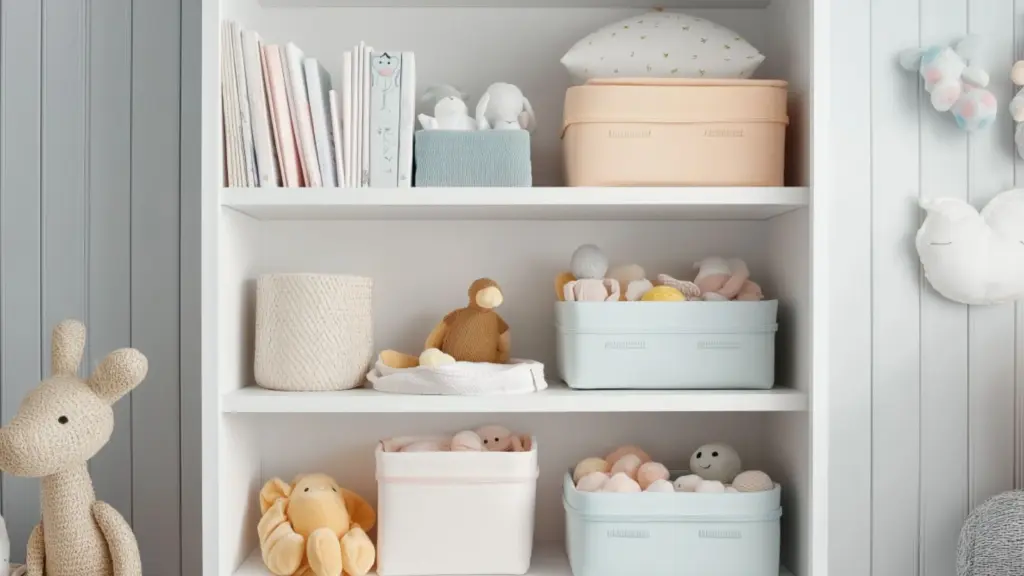
When floor space is limited, the only way to go is up. Vertical storage is a small-space essential, and in a closet-turned-nursery, it can make the difference between cramped and curated. Think about stacking storage, tall shelving, and utilizing the full height of the space—especially if the closet has high ceilings.
Floating shelves above the crib can hold baskets, books, or soft toys, while wall-mounted cubbies and pegboards can store daily essentials like pacifiers, creams, and extra onesies. Hanging closet organizers and over-the-door storage units are also ideal for holding diapers, wipes, and other small but necessary items.
The goal is to reduce clutter at floor level, making the space feel open and airy despite its size. Keep items you need frequently within arm’s reach and use labeled bins or boxes to maintain order.
Vertical Storage Cheat Sheet:
| Storage Type | Best Use |
|---|---|
| Floating shelves | Books, decor, lightweight essentials |
| Wall-mounted baskets | Diapers, lotions, pacifiers |
| Over-the-door hanger | Shoes, swaddles, seasonal accessories |
| Tall bookcase | Toys, blankets, nursery items |
Choose a Mini Crib or Bassinet to Fit the Space
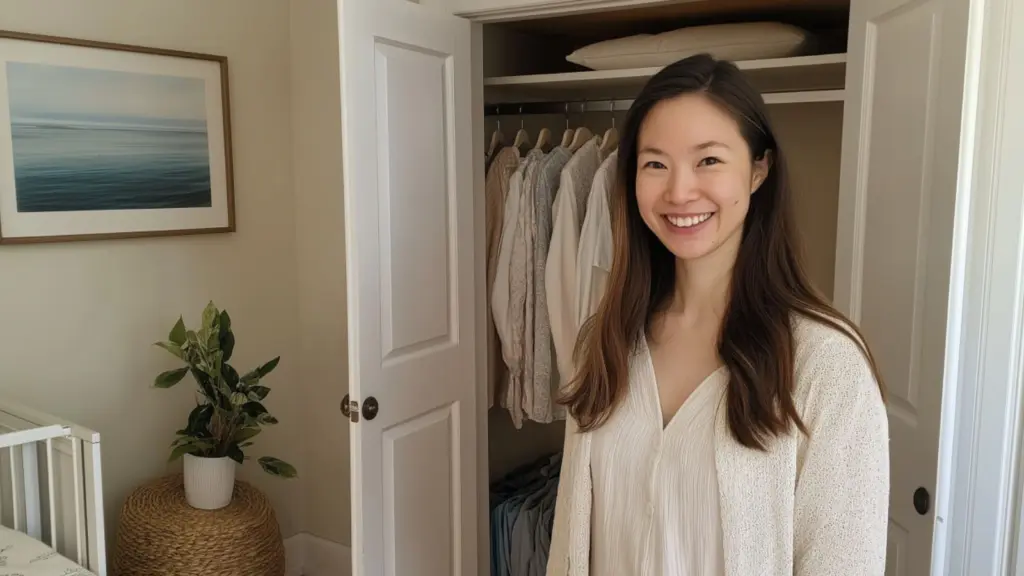
In a closet nursery, standard-sized cribs are often too bulky. Instead, consider a mini crib or portable bassinet, which are designed for compact spaces and smaller nurseries. Many mini cribs even come with wheels or folding mechanisms, allowing for flexibility and easy repositioning.
Look for multifunctional options that grow with your baby. Some mini cribs can convert into toddler beds or daybeds, extending their use well beyond the newborn stage. A bassinet, on the other hand, is ideal for the early months and can easily be moved into your bedroom if needed at night.
Also, remember to leave a few inches of clearance on each side of the crib or bassinet for airflow and access. Safety should always be your top priority, especially in tighter quarters.
Crib Comparison for Small Nurseries:
| Type | Pros | Ideal Use |
|---|---|---|
| Mini Crib | Space-saving, often convertible | Newborn to toddler |
| Bassinet | Portable, cozy, great for night access | First 4–6 months |
| Pack ‘n Play | Versatile, folds away when not in use | Travel or backup |
Opt for Light, Neutral Colors to Open the Space
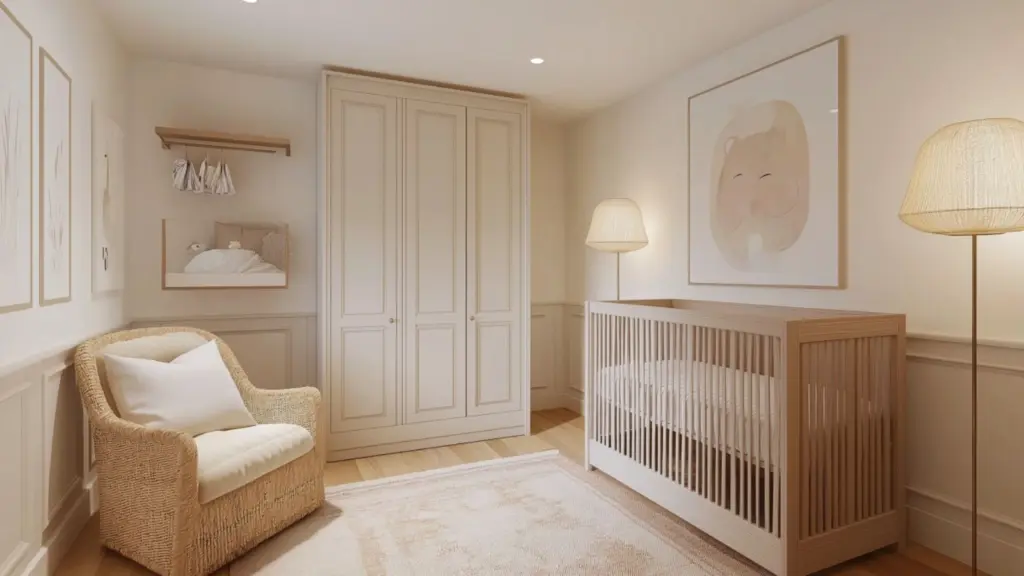
Color has a powerful impact on how a room feels—especially a small one. To make your closet nursery feel more spacious, choose a soft, neutral color palette. Shades like white, ivory, soft taupe, and warm greys reflect light and help the space feel brighter and larger.
Accent the walls with gentle pastel tones—blush pink, mint green, or pale blue—for a subtle splash of color without overwhelming the senses. If you want to add personality, consider a single patterned wallpaper panel behind the crib or a painted arch to give depth without closing the space in.
Lighting also plays a key role. Since closets often lack windows, incorporate layered lighting with a mix of ambient (ceiling or wall sconce), task (lamp or crib light), and decorative (fairy lights or nightlight) elements to keep the room soft and welcoming.
Closet Nursery Color Tips:
| Element | Suggested Approach |
|---|---|
| Wall Color | White, cream, soft pastel |
| Accent Wall | Wallpaper or painted arch behind the crib |
| Lighting | Soft warm LEDs, sconces, fairy lights |
| Decor Textiles | Keep prints subtle and colors light |
Use Built-In Storage and Custom Inserts
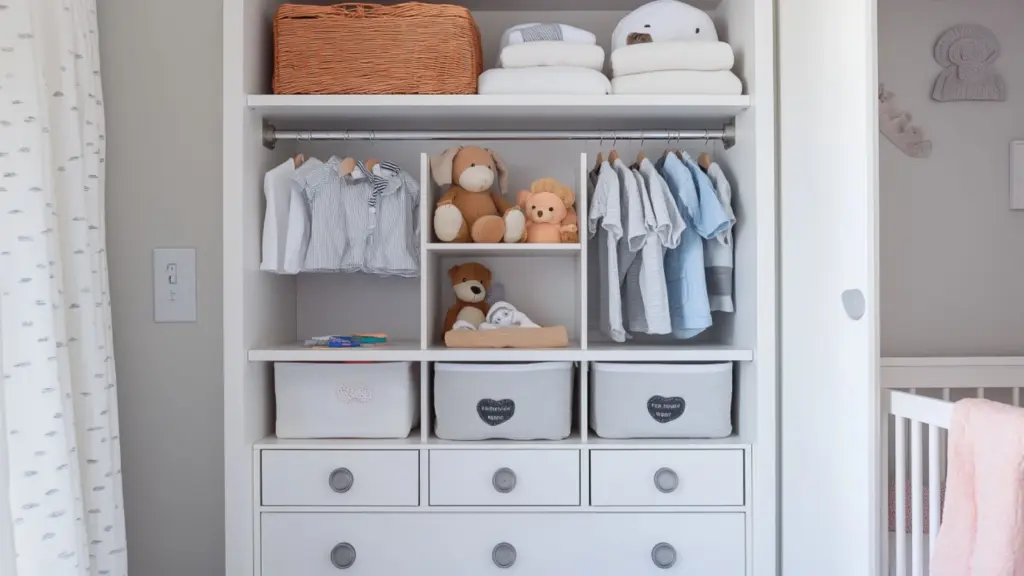
Closets are already designed with storage in mind, making them perfect for a customized nursery. Consider removing traditional hanging rods and replacing them with a combination of custom drawers, cubbies, and shelf inserts that match your baby’s storage needs.
This space can be personalized with custom woodwork or modular units from home improvement stores. Drawers beneath the crib or under-shelf baskets can store everything from diapers and blankets to extra clothes and toys. If you’re working with a reach-in closet, you can even remove the doors entirely and install a combination of open and closed storage that’s easy to access.
Built-ins don’t have to be expensive. With some creativity, even cube organizers, IKEA hacks, or closet systems can be adapted into a stylish, practical solution for baby storage.
Custom Storage Solutions Breakdown:
| Feature | Function |
|---|---|
| Built-in drawers | Diapers, clothing, linen storage |
| Cubbies or bins | Toys, wipes, accessories |
| Modular inserts | Adaptable to evolving needs |
| Pull-out shelves | Easy access in tight spaces |
Add Soft Textiles for Comfort and Coziness
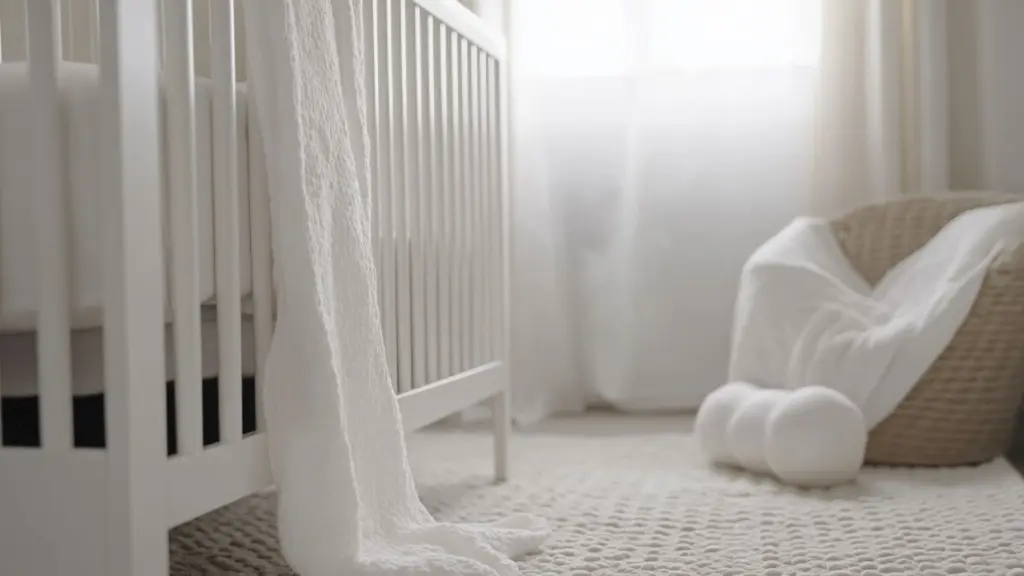
Even in a small space, texture matters. Soft textiles can transform a closet into a dreamy retreat for both baby and parent. Think beyond function—layers of fabric bring warmth, softness, and personality to the room.
Start with a plush area rug or cushioned mat that feels good underfoot during late-night check-ins. Add breathable cotton or muslin crib sheets, a knit throw for the rocking chair (if space allows), and blackout curtains for the closet entrance to control light and create restful naps.
You can also hang a small tapestry or fabric banner for visual interest, especially if wall space is limited. Fabric wall decals or removable stickers are perfect for adding gentle whimsy without permanent alterations.
Textile Styling Tips:
| Item | Why It Works |
|---|---|
| Area Rug | Softens the floor, adds texture |
| Blackout Curtains | Light control for naps |
| Muslin Crib Sheets | Breathable, soft for baby’s skin |
| Hanging Tapestry | Adds charm without taking up space |
Incorporate Multi-Functional Furniture
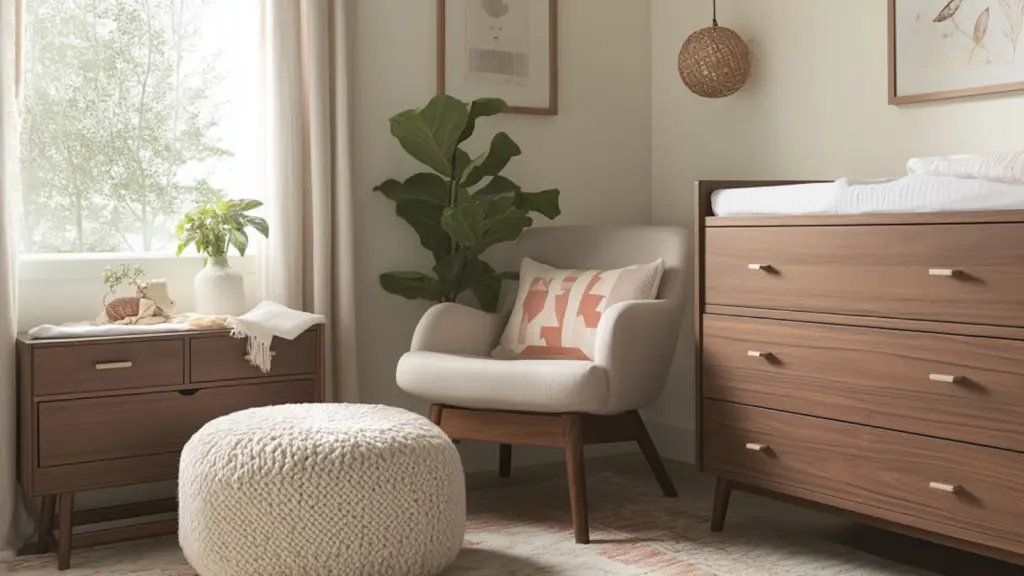
One of the golden rules for small nursery design is choosing multi-functional furniture. In a closet nursery where space is at a premium, pieces that serve more than one purpose help keep things tidy and maximize utility.
A compact dresser can double as a changing table when topped with a secured changing pad. Ottomans with hidden storage make the perfect seat and stash space for blankets or toys. Even wall-mounted fold-down changing stations are available for ultra-tight configurations.
Crib drawers, clip-on storage baskets, and convertible furniture that evolves with your child’s growth are all smart investments. Not only do these pieces keep the room visually streamlined, but they also support a minimalist mindset—only keeping what you need and love.
Multi-Use Furniture Options for Closet Nurseries:
| Furniture Piece | Dual Purpose |
|---|---|
| Dresser/Changing Table | Storage and diaper-changing station |
| Storage Ottoman | Extra seating and hidden storage |
| Crib with Drawers | Bed plus clothing or blanket storage |
| Wall-Mounted Table | Foldable surface for changing or bottle prep |
Create an Open Concept Feel by Removing Closet Doors
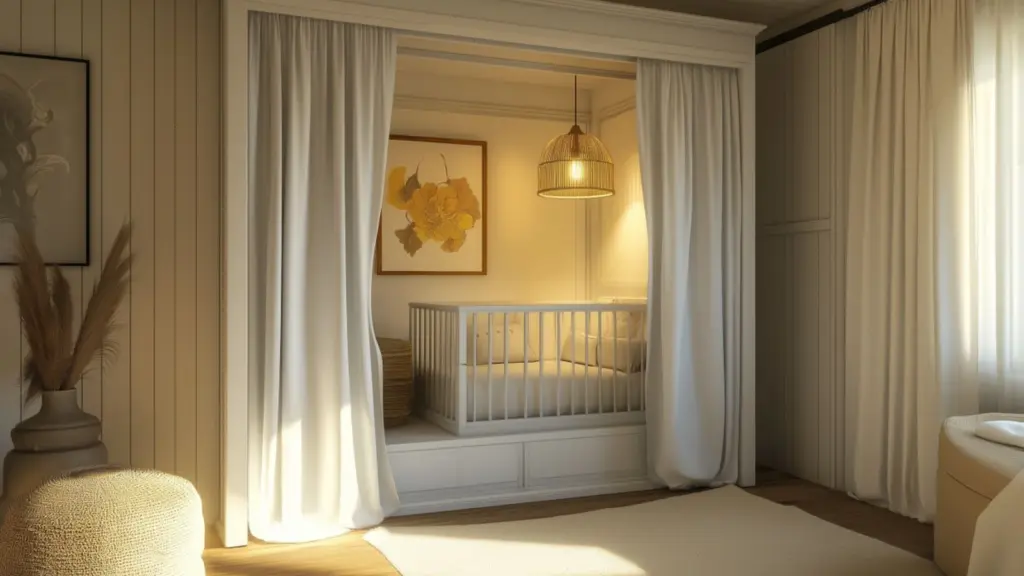
If the closet has traditional doors—especially sliding or bi-fold—removing them can completely transform the look and feel of the space. This approach helps eliminate visual boundaries, making the nursery feel like an intentional extension of the main bedroom or hallway.
Open concept nurseries can be softened by adding a floor-length curtain or fabric drape, which adds flexibility and privacy when needed. Choose a fabric that complements the nursery palette—linen, cotton, or even a light gauze for breezy movement.
This approach is particularly helpful for those using a reach-in closet. By removing the doors, you gain vertical and horizontal inches, ideal for overhead shelves or wider cribs. It also lets you personalize the space with lighting, wall art, or a statement mobile without visual interruption.
Pros and Considerations of Removing Closet Doors:
| Advantage | Consideration |
|---|---|
| Increases usable space | May reduce visual separation |
| Allows for larger layout | Requires neat, organized storage |
| Customizable curtain | Needs ceiling rod or mount |
| Opens up airflow/light | Less sound/privacy isolation |
Conclusion
Transforming a closet into a nursery is a beautiful testament to creativity, resourcefulness, and love. It proves that even the smallest spaces can hold big dreams—and that thoughtful design can turn limitations into inspiration. With smart storage, gentle textures, and space-saving furniture, you can create a peaceful haven tailored perfectly for your baby’s first months.
Whether you live in a studio, a family home short on bedrooms, or simply want to keep your little one close, a closet nursery is a practical and charming solution that works. It’s not about square footage—it’s about intention, comfort, and creating a space where tiny moments become lifelong memories.

